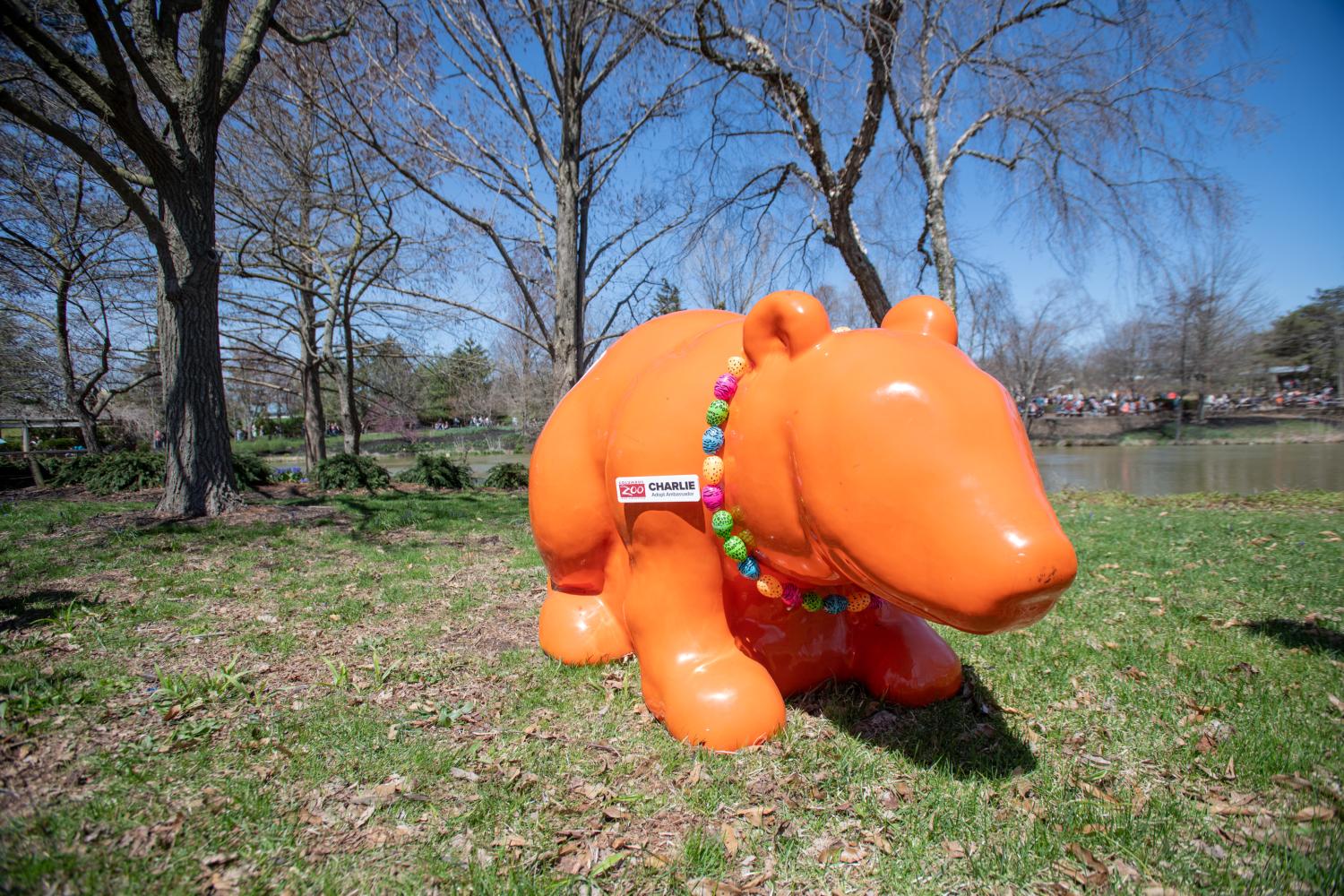
Hi! Iâm Charlie; the adopt bear!
Did you know that we have over 10,000 animals to feed and a fantastic nutrition team that cuts, weighs, and serves all the food for our animals? Animal nutrition maintains an inventory of 620 foods and supplements to meet the nutritional requirements of over 800 species. Zoo Horticulturists help all animals that receive plants as part of their diet to ensure they receive non-toxic plants.
We roughly go through 21 tons of USDA meat, 119 tons of grain, 232 tons of hay and straw, 13 tons of carrots, and 25 tons of apples every year!! (1 ton equals 2,000 pounds) But since each animalâs daily diet is personalized for each individualâs need and can change based on age, activity level, enrichment, season, medical conditions, and other reasons, those numbers are estimates. Diets can vary dramatically depending on each animalâs situation.
You help with those costs when you symbolically adopt one of our animals because 100% of your donation goes to the enrichment and food for that animal! Then the next time you visit the Zoo, you know that you have contributed significantly to our animals' health and wellbeing!
Come back often to see new information about our Spotlight Animals and Adopt specials throughout the year!
-Charlie
